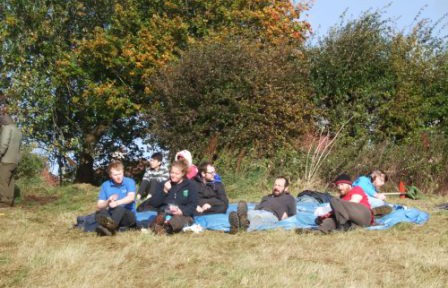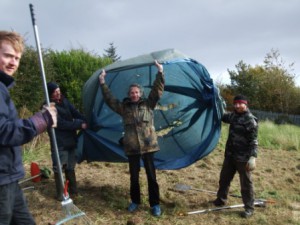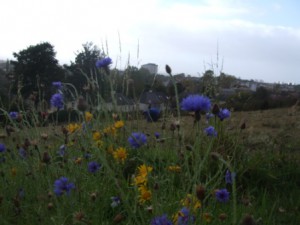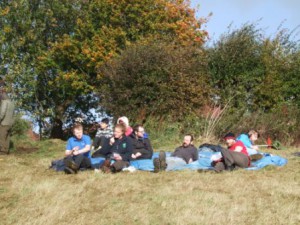
Loathe as we are to allow an incoming winter to prevent us from working hard, the other day we headed out to Trinley Brae in the West End to recreate a nice, natural hamlet for house sparrows, which have been on the rapid decline in the UK for some years now. House sparrows without houses? Unacceptable! And so, with the RSPB on board, we started cookin’ up a wildflower recipe that will surely attract some winged diners to this hidden haven. And when I say “hidden”, I mean that we traveled in many circles before arriving at our destination – the brae is cleverly tucked away. But the more undisturbed urban wildlife spots we have, the better, says I.
 If you ever find it is a little chilly outside, the best thing to do is to wrap up, rake grass uphill for a while and soon you will ponder why it feels so tropical in Scotland. Even with the cold wind so strong that it took three of us at a time to pin down the tarpaulin (which was trying to go a merry jig across the fields), we were sweating from the exercise and soon our jackets lay bundled up on the wheelbarrow.
If you ever find it is a little chilly outside, the best thing to do is to wrap up, rake grass uphill for a while and soon you will ponder why it feels so tropical in Scotland. Even with the cold wind so strong that it took three of us at a time to pin down the tarpaulin (which was trying to go a merry jig across the fields), we were sweating from the exercise and soon our jackets lay bundled up on the wheelbarrow.
The sun came out in time for us to starting planting wildflowers across the area, a much less energy-intense activity! Though occasionally, a volunteer may get lost in a forest of cornflowers.
I love how the Glasgow group has such a steady and cooperative working rhythm, never losing pace. Just a few hours of that teamwork helps bring a touch of biodiversity to a little-known area.
Safe to say, we earned a lie down and a cuppa.

